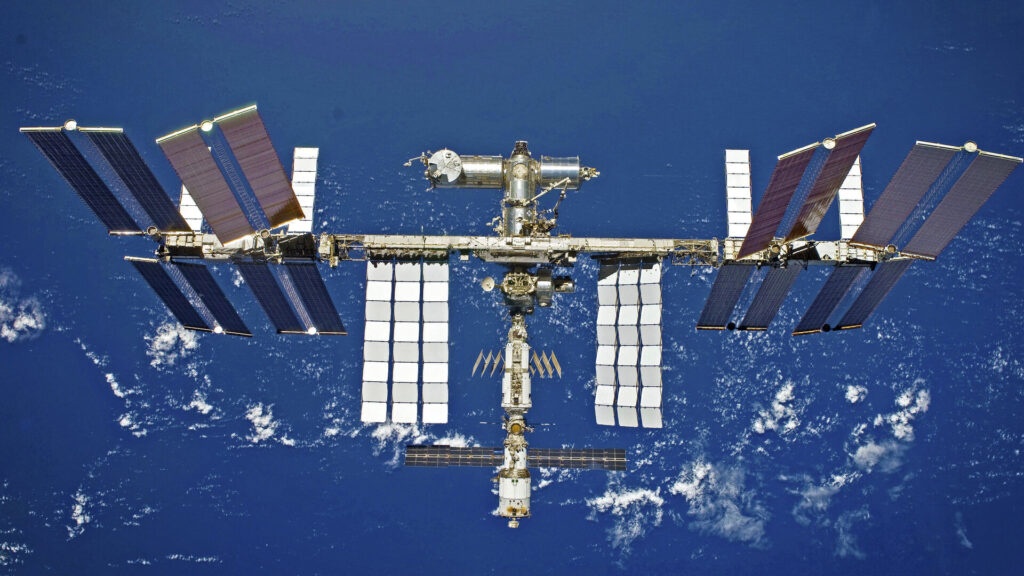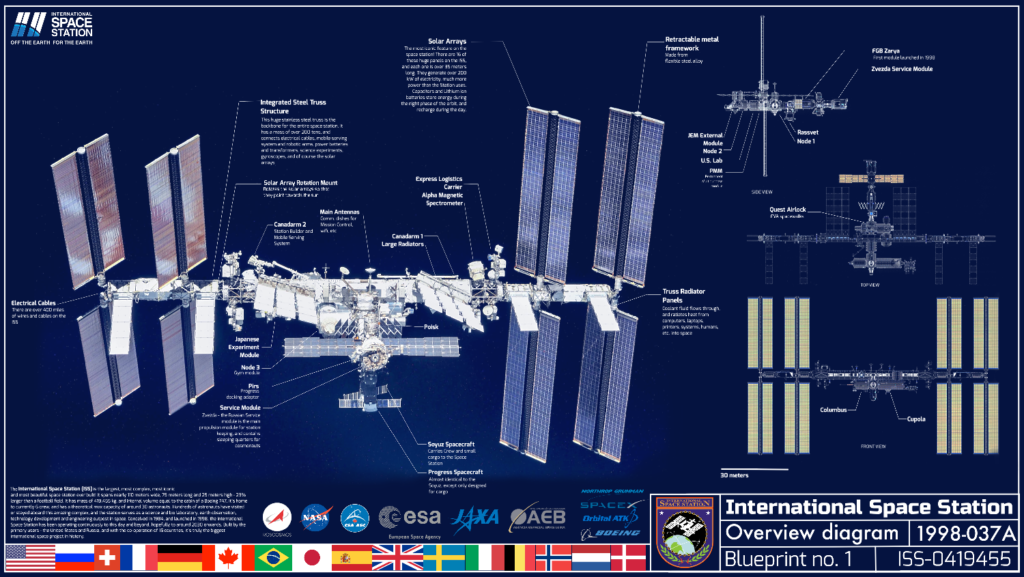
ISS – International Space Station is the largest modular space station currently orbiting in low Earth orbit. It is a collaborative project by 5 space agencies around the world. These agencies include NASA from the United States, ROSCOSMOS from Russia, and JAXA from Japan. Moreover, it includes ESA from Europe and CSA from Canada as well. It is currently serving as a space environment and research laboratory for each country. The ownership of the space station is given via an agreement. Moreover, it serves as a place where real-life scientific research is conducted in multiple fields. These fields include subjects such as astrology, astronomy, meteorology, physics, and many more.
The ISS costs about $3 million each year to operate. According to records, as of May 2022, a total of 258 people from 20 countries have visited the International Space Station. This space station has been orbiting the earth since 1998. However, it wasn’t put in the space all at once. Instead, it might be surprising to know that the space station was built in space. Multiple parts of the space station were transported one by one and assembled in orbit while the space station was orbiting the earth. It has a mass of 410,000 kilograms and is over 350 ft wide which is almost the size of an international football ground. It took more than 40 assembly flights to assemble the parts of the ISS.

Larger parts that were delivered to the space are as follows:
- Zarya was the first part of the ISS to be sent to space. It was launched on 20 November 1998.
- Unity Module was launched on 4 December 1998.
- Zvezda was launched on 12 July 2000.
- Destiny Laboratory Module was launched on 7 February 2001
- Harmony Module was launched on 23 October 2007.
- Columbus orbital facility was launched on 7 February 2008
- Japanese Experiment Module was launched on multiple flights between 2008-2009.
- The truss and the solar panels were launched on multiple flights between 2000-2009.
- Nauka Module is the latest part of the ISS. It was launched on 21-July-2021.
International Space Station is the biggest human-created satellite that is orbiting the earth right now.

[…] Also See: How is International Space Station structured? […]
[…] Also See: How is International Space Station structured? […]